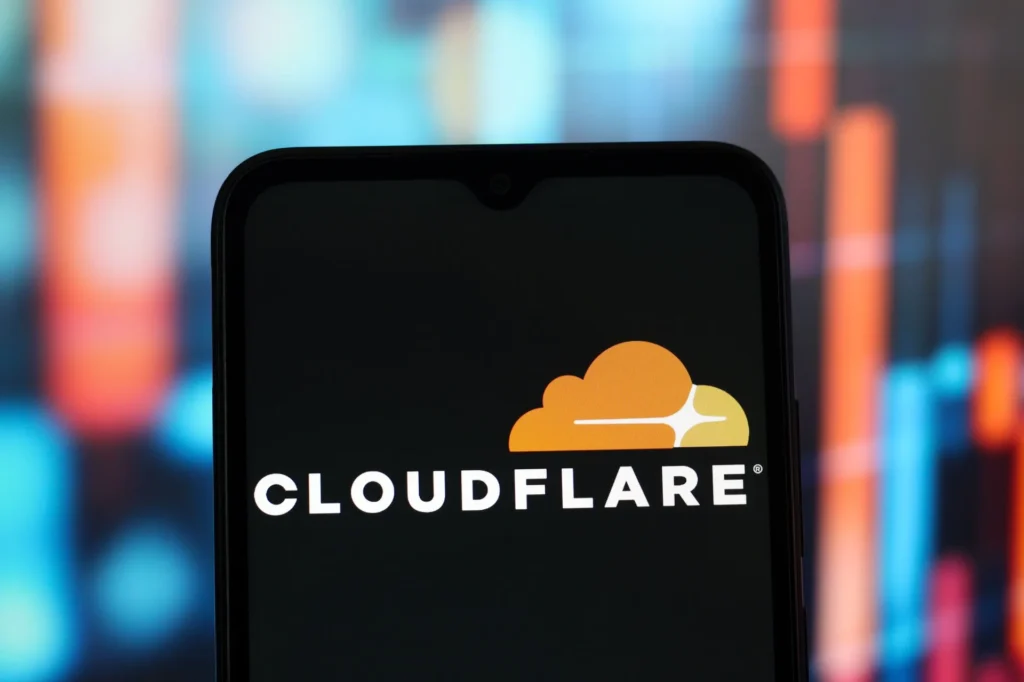Cloudflare, the company that powers nearly 25% of all web traffic, recently introduced an innovative AI crawler control feature designed to let website owners either block AI chatbots entirely or charge fees for access. Announced on July 1, 2025, this change aims to shift power back to content creators, paving the way for a new era in web monetization, scraping regulation, and AI training accountability.
1. Why This Innovation Is a Game Changer
First and foremost, AI-powered chatbots—especially large language models like GPT-4, GPTBot, and others—are consuming vast amounts of online content without direct compensation. According to Cloudflare, OpenAI’s GPTBot fetches content at ratios as high as 1,500:1 pages viewed per traffic referral. In contrast, Googlebot, the standard search crawler, averages closer to 18:1. This disparity means sites are being heavily scraped, with little to no return in terms of visibility, visitor engagement, or monetization, making it a significant issue for publishers and web businesses alike.
Meanwhile, traditional methods—like robots.txt, IP blocking, or rate limits—offer minimal protection because they rely on voluntary compliance. Now, Cloudflare’s policy shift offers a technological foundation to enforce boundaries and establish real-time economic models for web content access.
2. Historical Context: From robots.txt to Pay-Per-Crawl
Technically speaking, bots are not new. Since 1994, webmasters have been using robots.txt to suggest which parts of a site crawlers should or shouldn’t access. Yet, this protocol is only advisory and relies on voluntary compliance.
Subsequently, firms like Cloudflare and Akamai integrated bot detection systems using JavaScript fingerprinting, behavior analytics, and CAPTCHA challenges to minimize malicious scraping. Some Fortune 500 sites employed subscription paywalls or API licensing. However, none created a direct pricing model for AI-driven bulk crawling.
That changed in 2023, when news organizations and academic institutions began suing AI developers for copyright infringement, claiming their content was being used to train models without permission. In parallel, Reddit introduced rate-limited API tiers and subscription fees, leading to third-party app shutdowns.
Thus, Cloudflare’s introduction of a Pay-Per-Crawl marketplace marks an important turning point, turning scraping from a policy negotiation into a transactional exchange.
3. How Cloudflare’s AI Crawler Control Works
Cloudflare’s new system offers three main components:
Default Block Option
All new Cloudflare users will have AI crawler access disabled by default. Existing users can toggle this option via their dashboard. This ensures that unintentional Big Tech scraping doesn’t occur without owner consent.
Pay-Per-Crawl Marketplace
With this option enabled, publishers can publicly list terms for AI bots to crawl content. Terms might include $0.001 per page, tiered access for sections of the site, or subscription models. Any developer or AI firm using Cloudflare-hosted sites will see these terms, enabling transparent, automated access agreements.
Bot Authentication and “AI Labyrinth”
Cloudflare now enforces crawl keys, cryptographic tokens, and behavioral fingerprinting to verify identity. Unauthorized bots get served an “AI Labyrinth”—a static or decoy page that deceives machine intelligence, deterring scraping at scale.
In combination, these three capabilities allow site owners to assert control, monetize content, and protect intellectual property with automated precision.
For developers and designers experimenting with AI‑built visuals, our article on top AI image generators is a great resource.”
4. What Led to This Turning Point
4.1 Explosive Growth of AI Scraping
LLMs require vast text corpora to train and refine. To speed up research, companies implemented specialized crawlers—yet few acknowledged the need for compensation, especially against small publishers.
4.2 Publisher Backlash & Legal Pressure
Major publishers like Condé Nast, Reuters, and The Associated Press publicly supported Cloudflare’s move, calling for what they describe as “permission-based web” models. Additionally, lawsuits emerged in 2023 alleging unauthorized training use, implying that broader legal standards around data rights may soon evolve.
4.3 API Monetization Trends
Platforms like Reddit, Twitter (now X), and YouTube moved to pricing developer usage, charging for API keys, rate-limited endpoints, or usage tiers. Cloudflare’s Pay-Per-Crawl turns this concept outward, applying a monetization framework to publicly visible content.
4.4 GDPR, CCPA, and Fair Use Legislation
Legal trends in Europe and California mandate fair data use, especially regarding consent and transparency. Cloudflare’s crawl control can be considered a declarative consent system for bots, aligning with emerging regulations.
5. Potential Scenarios for AI Companies
AI developers now must choose one of three paths:
Option A: Pay for Access
Developers like OpenAI, Anthropic, or Meta may decide that paying to crawl Live sites is worth it, especially for high-value training data not easily available elsewhere.
Option B: Circumvention Attempts
Smaller or scrappier firms might explore proxies or direct scraping outside Cloudflare. While technically possible, Cloudflare’s maze of IP blocks and fingerprinting increases cost and risk.
Option C: Shift to Licensing Models
Some may transition away from direct scraping toward licensed datasets, partnerships, or open-source corpora—e.g., Common Crawl, The Pile, or academic repositories.
Whichever path is taken, Cloudflare’s shift may prompt the entire industry to rethink training data sourcing and prioritize ethical, transactional relationships.
6. How Publishers Can Take Advantage
For content creators and site operators, Cloudflare’s rollout offers immediate benefits:
- Assess your content value – Note which pages or assets are likely consumed by LLMs.
- Set crawl policies – Choose a default block or monetize with a fair crawler fee.
- Monitor usage – Examine Cloudflare reports and CF logs to analyze crawl patterns.
- Select pricing models – Consider static price per page or dynamic subscriptions.
- Communicate outreach – Add README.txt or HTTP headers to clarify crawl terms.
- Evaluate legal placement – Determine how your crawling terms align with licensing agreements or privacy policies.
By strategically configuring these controls, publishers can generate micro-revenue, reinforce brand identity, and deter unauthorized data scraping.
7. Wider Implications for the Web Ecosystem
Rebalancing Value
This policy signals a shift from “free content federation” toward a more equitable value distribution model, stressing that creators—and not just tech platforms—deserve recognition and compensation.
Policy and Legal Evolution
If pay-per-crawl becomes normalized, regulators may begin to treat bot access as a service transaction, leading to broader rules like mandatory crawl disclosure, usage reporting, or taxation.
Competition Among CDNs and Platforms
This innovation positions Cloudflare as a leader in web policy infrastructure. If competitors like AWS CloudFront or Akamai implement similar features, acceptance may become universal, fostering a new digital economy layer around content access rights.
Technical Complexity and Compliance
Site administrators will need to learn how to manage crawl budgets, analytics, and integration with bot authentication. Developers may explore compliant crawler clients capable of negotiating terms.
Ultimately, websites may share crawl policies through standard metadata such as leading to a decentralized framework for crawler etiquette.
8. FAQs: Clarifying Top Questions
Q1. Does this block Googlebot and search engines?
No. Cloudflare has exempted approved search crawlers like Googlebot and Bingbot, and most indexing bots will continue as usual.
Q2. Will small websites see traffic decline?
Only if pay-per-crawl is enabled and AI developers choose not to pay. Otherwise, small sites that leave default blocking off should experience little change.
Q3. How are fees calculated?
Publishers will set their own limits—by page, daily crawl volume, or total dataset access. AI firms decide if the price is worth it.
Q4. What about research institutions?
Cloudflare indicated that NGO and academic crawlers could be allowlisted or receive discounted, perhaps reduced-rate access, though details are still evolving.
Q5. Could this lead to a fragmented web?
Potentially. If big CDNs adopt crawl controls unevenly, AI firms may only access content from participating domains, leading to gaps in model training.
9. What Happens Next
- July–December 2025: Cloudflare tests Pay-Per-Crawl beta with select publishers and AI firms.
- 2026: Feature rolls out publicly; early adopters may begin collecting crawler revenue.
- Post-2026: Industry standard-setting begins, including licensing frameworks, bot verification APIs, and crawler compliance, nations could enact supportive laws.
- Towards 2028: AI companies may shift to licensed datasets, altering business models in media, education, and e-commerce.
People Also Search For
Cloudflare AI crawler block, pay-per-crawl feature, GPTBot block tool, robots.txt limitations AI, monetize content from chatbots, AI web scraping fees, GPTBot crawl cost, block AI bots website, AI crawler regulation, AI data license model
Credible Sources & News Updates
navlist containing the following URLs:
- Cloudflare launches tool to help website owners monetize AI bot crawler access
- Cloudflare will now block AI crawlers by default
- Cloudflare Targets Media Firms, Content Creators Amid AI Boom
Conclusion: A New Frontier for Web & AI Ethics
Ultimately, Cloudflare’s new AI crawler control option stands as a significant milestone. It represents not only a victory for content creators and publishers but also an essential step toward fair, licensed AI development, transparent crawling, and a value-respecting web ecosystem.
Readers, what do you think? Should AI companies pay to crawl? Or is this anti-open-web? Let me know your thoughts below.


